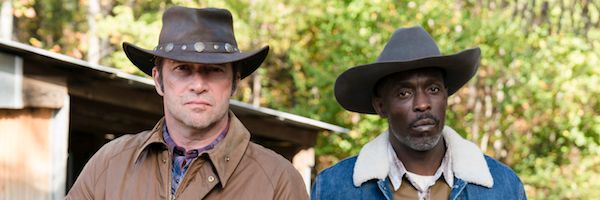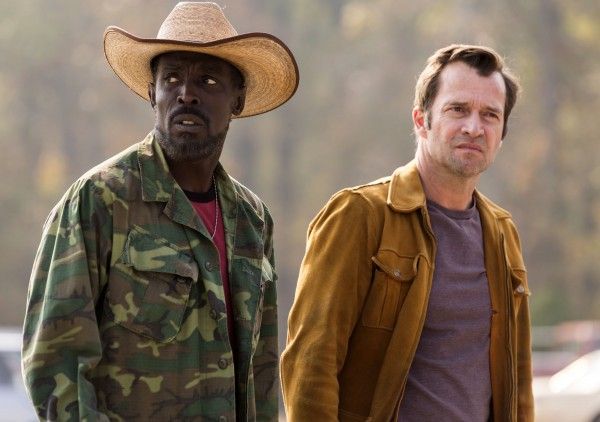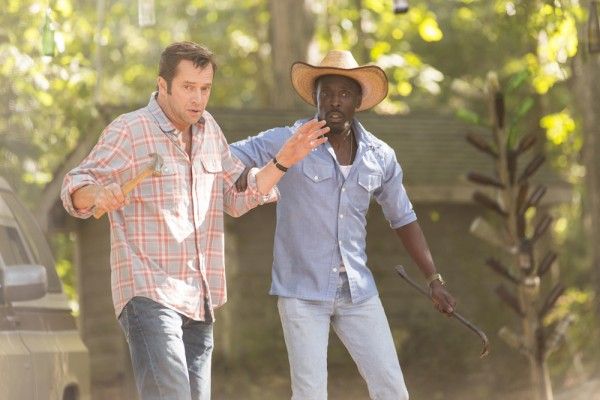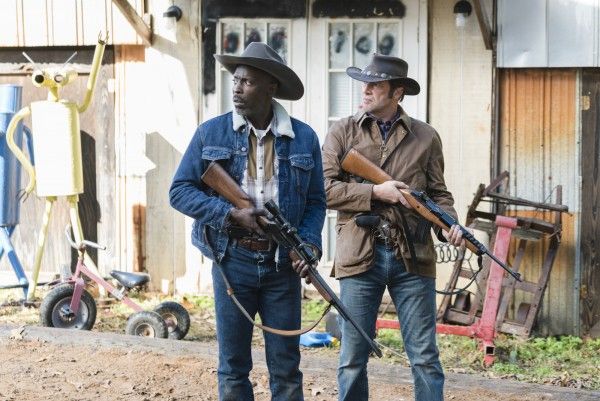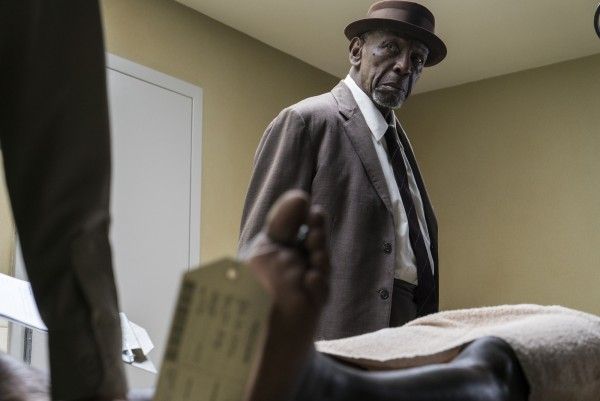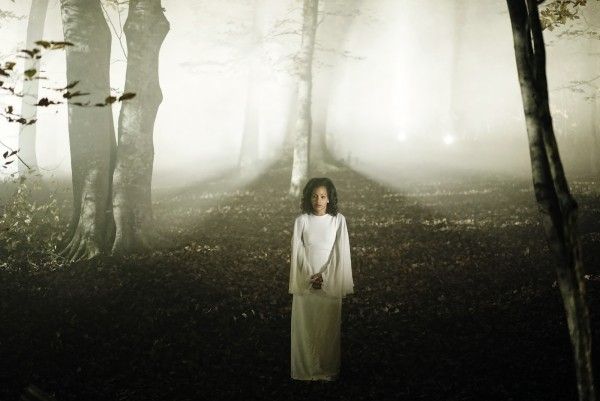After finishing a devastating and yet strangely timely third season, SundanceTV’s Hap and Leonard again finds itself on the renewal bubble -- even though its rating are up from Season 2. The show is a Peak TV gem, one that has gotten (perhaps understandably) lost among the noise of shows with bigger budgets on bigger networks. But as I’ve written about many times before, Hap and Leonard deserves more attention. It’s unusual in a number of ways, including its unique 1980s East Texas setting, but mostly in the friendship between its leads. Hap Collins (James Purefoy) is white, a hippie, and a hopeless romantic, while Leonard Pine (Michael K. Williams) is a conservative, black, gay Vietnam veteran. They bridge that ideological divide through trust and respect, a lesson that — again — feels timely in a very modern sense.
For those who have been watching the show, you know all of this. You know that the series has always walked a fine line between chaos and deep, emotional authenticity. You know that there aren’t friendships between two middle-aged working class men like this on TV. And forget Roseanne — Hap and Leonard may be TV’s most blue-collar series, one that isn’t afraid to engage with racial politics in a way that never feels ham-fisted. This third season, “Two-Bear Mambo,” has been the most overt so far in that regard, yet it broached the topic of the disappearance of a young black woman — and a Klan-infested town’s reaction to that — with nuance and emotion, especially in the way it gave Florida (Tiffany Mack) a voice with an episode devoted entirely to her truth.
What it comes down to is that the show (thanks to its source material by author Joe R. Lansdale) understands the south, and all of its complicated dynamics. Not since Rectify has a southern-set series had such an authentic exploration of its culture just in the way its characters react and interact with one another. But Hap and Leonard also brings that unique exploration to the way it presents a view of masculinity that isn’t afraid to embrace love. "Two-Bear Mambo’s" finale included a sequence that summed all of this up perfectly, as Charlie Bank (Douglas M. Griffin) counsels Hap to mend things with Leonard in the aftermath of the Grovetown beatdown The two friends were broken, with Hap feeling incredible guilt for being glad he wasn’t the one under assault in that moment. It was a beautiful scene by Purefoy, and when Hap does go to see Leonard (who was just leaving to go and see him), they keep things simple: “We good?”
They are, and while they don’t talk to one another about the specifics of that moment, they reunify by talking about the fallout from Grovetown and their renewed vigor in finding Florida. It’s a quietly triumphant moment, one that many dramas don’t find time for, instead focusing so intently on violence and horror. But the show also mixes those intense moments with humor (something it does with panache) and chaos (like the onset of the flood). It’s a rare series that can do this and do it well, but Hap and Leonard is most certainly one.
If Season 4 were to happen, it makes sense to follow the next book in Lansdale’s series (as they have done so far), which puts the focus on Leonard being framed for a crime. But the following book, which incorperates the Dixie Mafia, could also be a heck of a lot of fun. Either way, with only six episodes to work with each season, the show is finely crafted and purely distilled, making every single moment count. It’s not a huge investment for Sundance’s parent company AMC to take on, especially since what this series is doing is important. Not to mention it would also be incredibly sad to leave things as they were to close “Two-Bear Mambo,” with the death of Florida and Hap’s dream of them dancing on the water. It’s as positive of a coda as we could ask for after such an intense and hard story, but it would also be a shame to not explore the further adventures of these two smart, soulful, and chaos-prone friends into a new chapter.
From an interview I did on the show’s set last fall, Purefoy summed up his feelings about the show that really perfectly defines why it’s such a delightful and necessary series:
“I love this show, I think it does something extraordinary. I think it shows real working-class lives, I think it shows a black experience, it shows a white working class experience, it’s blue-collar. It actually shows and holds a mirror up to nature so much more than anything else that’s on television, and I think that people will recognize these people, these lives, the conditions of the houses that they live in. And the shitty cars they drive that fall apart, and they find hard to replace, and they aren’t earning enough, and they’re putting in longer hours and you know … it’s all about that sort of stuff. And if I didn’t do another job in my life I’d be happy to call it a close right now, because it’s a really interesting show, and I’m really proud of doing it.”
The first two seasons of Hap and Leonard are currently available on Netflix, and the just recently finished Season 3 is available in full on the Sundance Now app.

